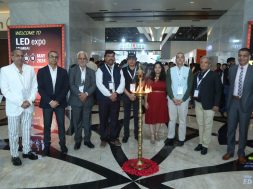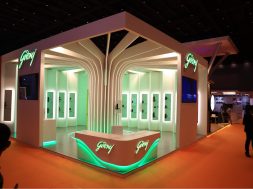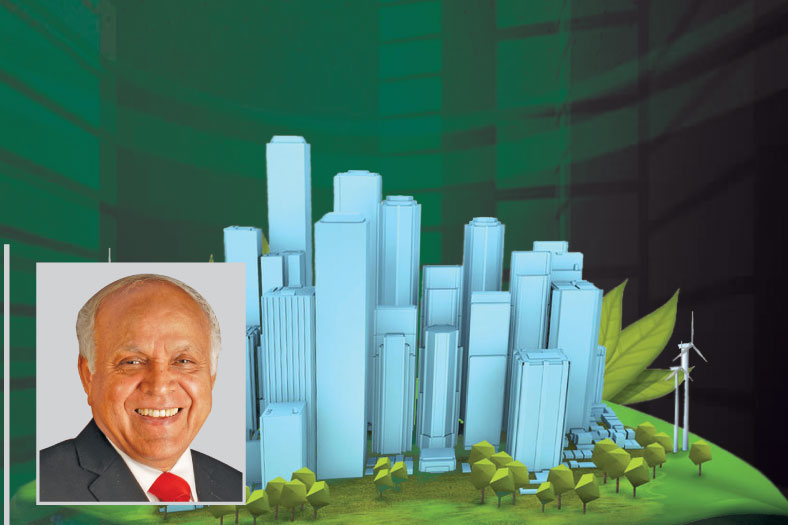Design Mantra
“I design projects to connect to their surroundings: city and place. For me, cultural connections are just as essential as connecting to a physical landscape, and as with any holistic process, most things are intertwined,” says Sudhir Jambhekar, Senior Partner, FXFOWLE Architects
Innovation plays a key role in the growth and success of any business and when it comes to architecture, with their innovative designs, technology and sustainable strategies FXFOWLE, has managed to deliver unique perspective to every project. Ranging from mosques and bridges to residential and office buildings, Architect Sudhir Jambhekar has given contemporary design solutions to various projects.
In an exclusive interview with Afreen Sayed, the architect talks about the distinguished work cultures, his upcoming projects and how he finds unique solution for each of his projects.Your projects have won several major design awards. Could you explain the philosophy behind your design?In terms of the design, my process includes an in-depth search to understand the meaning and usefulness of a given project, narrowing the infinite possibilities to an idea that balances the forces at work in each. Finding the unique solution for each project is a critical part as design must also consider external factors like climatic and cultural influences. I design projects to connect to their surroundings: city and place. For me, cultural connections are just as essential as connecting to a physical landscape, and as with any holistic process, most things are intertwined. In this sense, I am also a strong proponent of collaboration, and I appreciate when the client is an integral part of the project vision. Many times, the client comes to the table with an expertise in an entirely disparate discipline, but their perspective is nonetheless influential to the project’s realisation.
Over the years, what changes you have witnessed in the field of architecture?For any field, everything evolves and changes with time. I have seen the most transitions in our industry’s technological advancements and our propensity for globalisation. Technology has altered the ways in which architects visualise and deliver projects. The same fluidity and ease of information that we witness everyday has only been feasible within the last few decades. It is this same technological innovation that makes it possible to work and travel at an unprecedented pace. Architects are building at record speeds around the globe and it’s affecting both our industry as well as built environment worldwide.
You have worked in India and abroad. What are the differences you have witnessed in terms of work and culture?FXFOWLE’s main office is based in New York City, but we practice internationally and have designed a number of projects in the Mumbai and Delhi area. From my limited experience, I have witnessed a number of differences between the design approach, sense of aesthetics, working process, and means of delivery in the United States and India. The United States still follows an imperial system while India seems to adhere to a unique blend of metric, imperial, and Indian systems of measurement. In India, engineers and other consultants are not always well integrated into the design process, creating coordination issues. In addition, bureaucracy and regulations seem to take a significant toll on design, and projects are delayed in India more so than in the United States. Construction methods differ on issues of steel versus concrete, dry versus wet construction, and the ways in which plumbing and mechanical systems are adopted to local conditions due to the availability of products. Larger projects in India seem to be managed similarly, but during construction, the process of approving shop drawings is not a much of a standard practice as it is in the United States. In terms of culture, just to mention a few, the sense of privacy and personal space is viewed very differently and the notion of universal accessibility is not perceived to be as important.
What projects you are currently working on?Our office has a very diverse architectural practice and we are currently working domestically in the United States as well as internationally. In the United States we have projects in New York, Boston, Georgia, Louisiana, and the Washington, DC metropolitan area. Internationally, we are working in Nairobi, Istanbul, Riyadh, Dubai, Baku, Fubon, Nantong, and Mumbai to name a few. I am currently working on mixed-use project in King Abdullah Financial District and the Museum of the Built Environment, both in Riyadh. Other international projects include residential buildings in Istanbul and South Mumbai, Sixth Crossing Bridge in Dubai, Baku Spa in Azerbaijan, and a mixed-use development in China. What role do you play in developing green buildings?FXFOWLE has been for many years at the forefront of climate change adaptation and resilience design and advocacy. Our design for 4 Times Square, a 50-storey commercial tower in the heart of Manhattan was among the first green skyscrapers, and served as a catalyst for the LEED rating system. Today, we design all of our projects to be environmentally responsible. Many of our projects achieved LEED Platinum and LEED Gold certification.
What is the biggest challenge the profession of architecture is facing?The architectural profession is constantly evolving, and for that reason, the full implications and impact of globalisation are not yet quite understood, particularly when it comes to preserving diversity of cultures and dealing with climate and resources. In addition, the increasingly larger scale of projects and fast pace with which these projects are expected to be built has created additional challenges in terms of delivery. It will always be challenging to know what the future will hold and to keep up with human demands as well as inspirational shifts.
What advice would you give to budding architects? All young architects should be passionate about design and the built environment. Bruce Mau once said that “massive change is not about the world of design; it’s about design of the world”. Buildings and infrastructure are both critical components of the built environment; both tremendously benefit from good design and desperately suffer without it.
In addition, I believe that young architects should be committed to learning, thinking and acting responsibly to the issues of urbanisation, environment and social contributions.
25
Cookie Consent
We use cookies to personalize your experience. By continuing to visit this website you agree to our Terms & Conditions, Privacy Policy and Cookie Policy.







